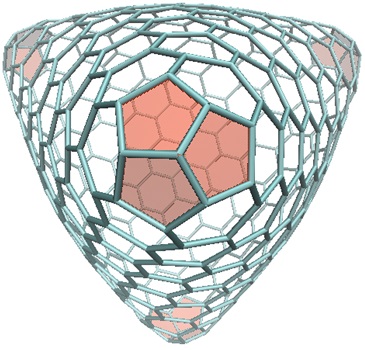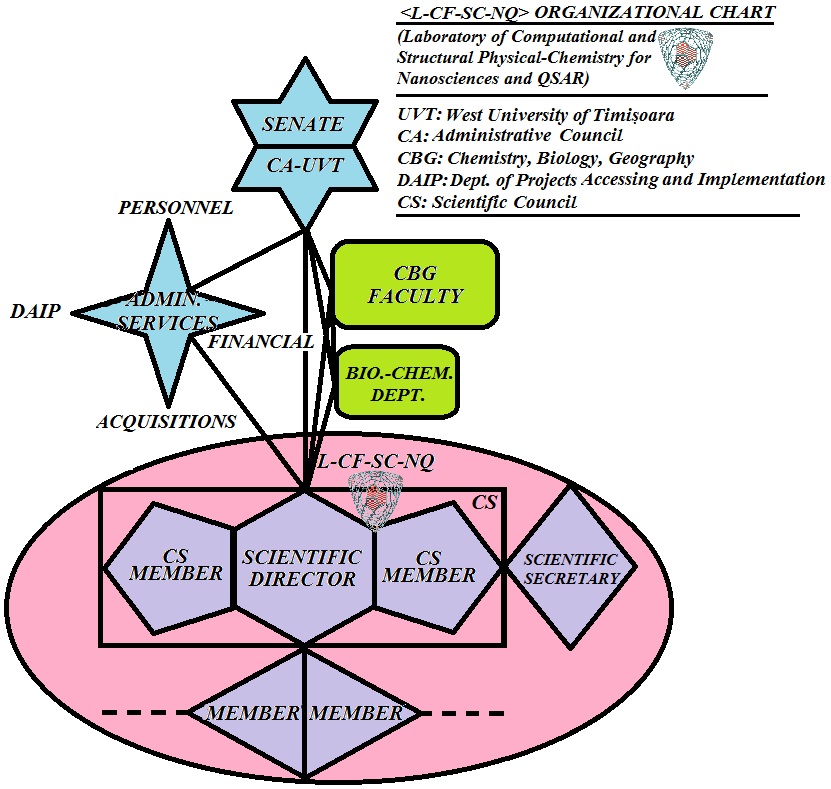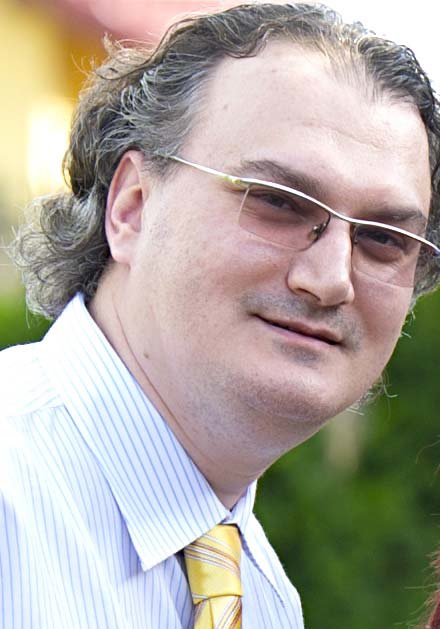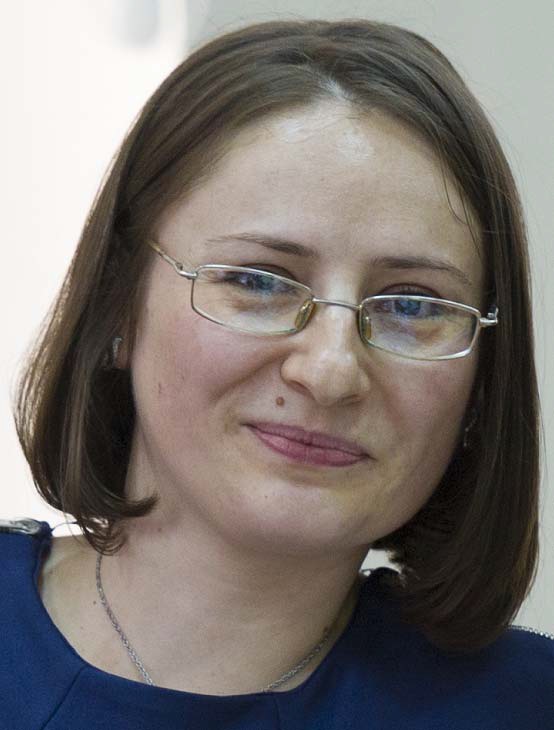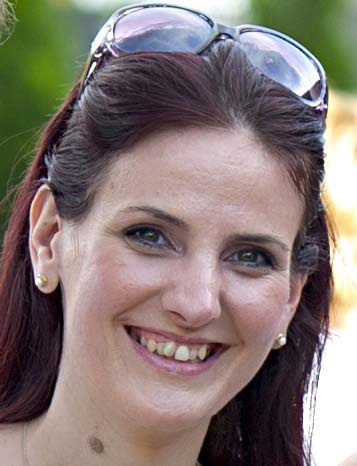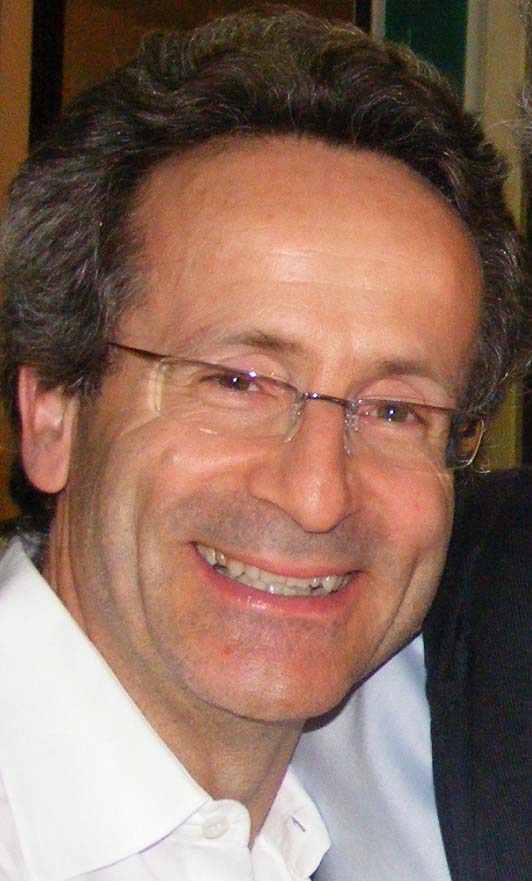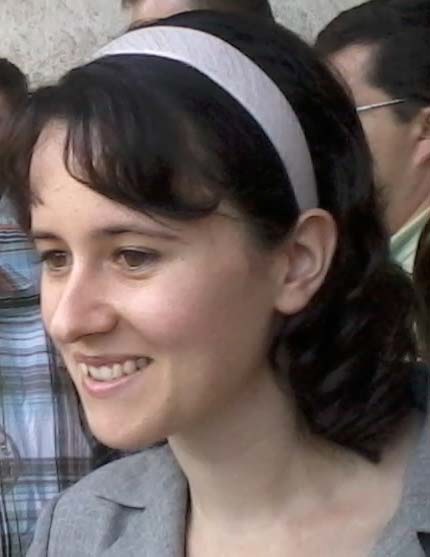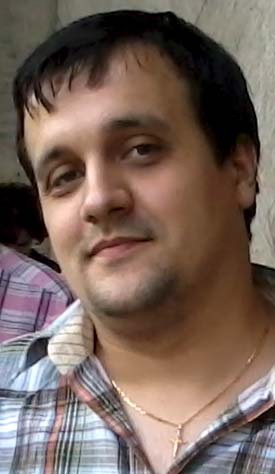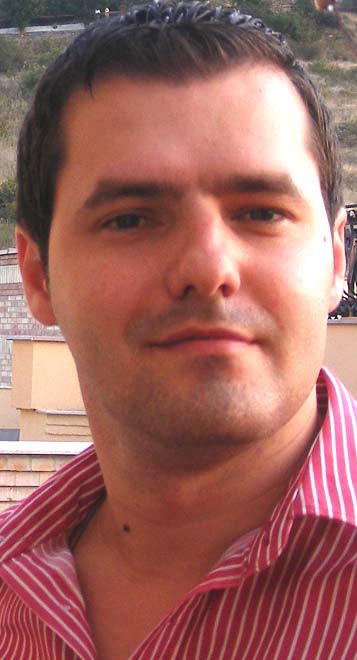Research Group and Laboratory on
STRUCTURAL AND COMPUTATIONAL PHYSICAL-CHEMISTRY FOR NANOSCIENCES AND QSAR (L-CF-SC-NQ)
Presentations & Seminars of L-CF-SC-NQ OPEN HERE
Results on 2014 OPEN HERE
L-CF-SC-NQ Presentation OPEN HERE
Results on 2013: OPEN HERE
Results on 2012: OPEN HERE
Results on 2011: OPEN HERE
Results on 2010: OPEN HERE
Announcements: Mihai V. PUTZ: Best Researcher of the Year 2010!
1. GENERAL DIRECTIVES: LABEL, LOCATION, INSIGNIA AND FURTHER MODIFICATIONS
1.1. Label of the unity research is „ Laboratorul de cercetare în Chimie-Fizică Structurală și Computațională pentru Nanoștiințe și QSAR [Quantitative Structure-Activity Relationship(s)]”, being this represented by the acronym (L-)CF-SC-NQ.
1.2. For English communication the name is: „Laboratory of Computational and Structural Physical-Chemistry for Nanosciences and QSAR”, with keeping the acronym „(L-)CF-SC-NQ”.
1.3. L-CF-SC-NQ has its headquarter in the Faculty of Chemistry, Biology and Geography (CBG), in Biology-Chemistry Department, Hall and Bureau Office of Informatics’ Laboratory (ground floor, near Didactic Laboratory of Physical-Chemistry), on Pestalozzi 16 Str., Timişoara, 300115, Timiş County, Romania, with the approval of the officials having their didactic and research activity in the specified places.
1.4. L-CF-SC-NQ logo is represent by the original ensign:
created in the space of large icosahedral fullerenes C240 type. The structure was computational obtained by the gSW+2sBerge mechanism (generalized topological transformation of Stone-Wales type supplemented by the application of Berge Theorem of isomeric space of self-transformation, here limited at the topologically transformation involving two chemical bonds from the structure, i.e. in short G=2s(H)), this way, innovatively completing the Fowler-Manolopoulos algorithm limitation of the spiral generation of penta-hexagonal rings in fullerenes and “classical” nanotubes; the structure was originally produced and will appear in the book chapter “Generalized Stone-Wales Transformations for Fullerene Graphs Derived from Berge’s Switching Theorem” whit the authors Ottorino Ori, Mihai V. Putz, Ivan Gutman, și Peter Schwerdtfeger, in memorial monograph organized by I. Gutman, B. Pokric, D. Vukicevic (Eds.), Ante Graovac – Life and Works, MATHEMATICAL CHEMISTRY MONOGRAPHS, No. 16, Publisher: University of Kragujevac and Faculty of Science Kragujevac, 2014, Hardcover, ISBN: 978-86-6009-021-0.
1.5. CF-SC-NQ logo is a visual identity element of the Laboratory and it must appear on all official communications of the Laboratory. The CF-SC-NQ laboratory logo is an own insignia, different from those of CBG Faculty and UVT, but it must accompany them; the logo is utilized on all the materials (printed, in electronic format or on any other format) promotional or informative, realized for this purpose by whichever member of L-CF-SC-NQ;
1.6. Any modification of the logo has to be approved by the Scientific Director of L-CF-SC-NQ and communicated to the UVT Senate.
1.7. The “art-work” type promotion of the Laboratory and of its label and acronym (L-CF-SC-NQ) can be made only with the approval of the Scientific Director, however without the necessity of approving at the UVT Senate level.
1.8. The disseminations through publications and presentations made by the L-CF-SC-NQ members or by other collaborators benefiting totally or partially by Laboratory assistance will contain, alongside with the other eventual affiliations, the specific identifications information specific to L-CF-SC-NQ, namely:
|
Laboratory of Computational and Structural Physical-Chemistry for Nanosciences and QSAR Department of Biology-Chemistry West University of Timișoara Pestalozzi Str. No. 16, RO-300115, Timişoara, Romania Tel:+40-256-592638, Fax: +40-256-592620 E-mails: (...)@cbg.uvt.ro, (...)@e-uvt.ro, etc. |
1.9. The present Regulation Rules and Statute become active starting with the date approved by UVT Senate.
1.10. Further modifications of this present Regulation Rules can be made, at the proposal of the Scientific Director, with the unanimity of the Scientific Board of Laboratory, and with the approval of the UVT Senate.
1.11. The dissolving of L-CF-SC-NQ can be decided by the Scientific Director, in unanimity with the Laboratory Scientific Council and with the notification of the UVT Senate. The Director and the L-CF-SC-NQ members will establish the destination of the endowments and the funds remained after liquidation; instead, the fate of the fix and mobile means of L-CF-SC-NQ are made according with the alertness of the enforced laws.
2. MISSION
2.1. L-CF-SC-NQ is a scientific and independent unit of research, without juridical personality, in the FUNDAMENTAL DOMAIN: MATHEMATICAL AND NATURAL SCIENCES, with objectives on fundamental research, dissemination, education and institutional promotion at the MULTIDISCIPLINAR CHEMISTRY level (non-limitative including the disciplines of physical-chemistry, chemical informatics, mathematical-chemistry, physical organic chemistry, nano-inorganic chemistry, biology-chemistry, biochemistry, bio-informatics, pharmaceutical chemistry, medical chemistry, ecotoxicology, geochemistry, QSAR, etc.) applied to phenomena and properties of NANO-STRUCTURED matter, in isolate state and in reciprocal and with environment interaction (QS[A-activity/P-property/T-toxicity]R), explained and controlled by the PHYSICAL laws, modeled with MATHEMATICAL and COMPUTATIONAL aid.
2.2. The research unfolded by L-CF-SC-NQ is in accordance with the University Research and Creation Strategy of West University of Timișoara for 2012-2016 (HS14/12.12.2012) and follows the Regulation of University Scientific Research and Creation (Annex 2 from HS17/20.02.2013), and appear from the necessity of „solving” the knowledge limitations with social and economic impact which are the main problems of Human Kind in the second decennium on XXI century, namely, as the document Horizon 2020” states, those which are referring to:
- - The „Safe, Ecological and Efficient Energy” issue;
- - The “Ecologic Transport and Intelligent Communication” issue;
- - The „Longer and Welfare Life” issue;
2.3. This way, L-CF-SC-NQ is developed to have a contribution in solving these problems by original research approach based on reposition of the fundamental perspective of the matter structure (photons, electrons, atoms, molecules, biomolecules) in reciprocal interaction, with the faith this is the only approach able to give a „jump” rather than a „pulse” of quality in welfare life by exploring the Nature resources for a sustainable future.
2.4. Nevertheless, the research of L-CF-SC-NQ is addressed to fundamental physical-chemical phenomena with bio-eco-pharmacological and even with techno-logical impact by exotic and frontier phenomena, meaning by them those phenomena which are „pushed to the limit” of their manifesting (and knowledge), so that they can be introduced as new adaptive and functionally controlled features of matter (e.g. by energy- and information harvesting feed-back type response), which should stay at the base of new employment and recycling technology integrated in the phenomenological polynomial: HUMAN KNOWLEDGE-TO-PRODUCTION/SOCIAL UTILITY-TO-RESOURCE ECONOMY-TO-INTERACTION DESIGN WITH THE ENVIRONMENT-TO-NATURE EQUILIBRIUM.
However, apart of innovative knowledge by fundamental scientific research mission, there are also additional institutional specific missions about communication and professional training in the scientific and education domain, also relating with the institutional image, namely:
2.5. L-CF-SC-NQ is also called to close the knowledge-dissemination/communication circuit by organizing the curriculum for advanced professional training (post-university, Master, PhD and post-doc) but also for organizing or co-organizing in partnership a series of work-shops sessions, seminaries, conferences and congresses, based on the demanding, needs and possibilities of organizing such educational acts within the background of CBG Faculty and UVT;
2.6. L-CF-SC-NQ facilitate the students training at the graduation, master and PhD levels, but also the post-doc students and assure the financial premise, support and logistics collaboration with them and also with the invited researchers and/or in scientific visit (in case of invited researchers or visiting researchers) in the laboratory research domain (2.1 article) including with international participation, on personal ground, or within European Union programs (Erasmus, Marie Curie or others) or supported by the Romanian Govern (including the bilateral agreements with Germany, Italy, France, India, China, USA, etc.), etc;
2.7. Finally but not at the least L-CF-SC-NQ is engaged in increasing the prestige of West University of Timișoara and CHEMISTRY Domain for Chemistry, Biology, Geography Faculty, by constantly enriching the scientific publication portfolio, disseminations and collaborations affiliated and associated with UVT/CBG, with relevance and international impact, this way significantly contributing to the collective effort of the “UVT team” towards OBTAINING AND THEN MAINTAINING THE STRATEGICALLY CLASSIFICATIONS for the West University of Timișoara:
- -UVT in 500 Top Shanghai;
- -UVT as advanced research and educational institution in Romania (C-Classification);
- -A-classification in Romania for the Chemistry Domain at UVT;
- - Supporting the CHEMISTRY PhD School at UVT by constant coordination/supervision and with successful PhD Thesis finalizations as elaborated in the Laboratory.
3. FRAMEWORK PROGRAMME/STRATEGY, DIRECTIONS AND RESEARCH TEMES
According with the enounced MISSION for the scientific research of L-CF-SC-NQ there are three large directions of strategic studies, which will be systematically approached in the following sabbatical cycle of research financing at national and European Union level:
3.1. The „bosonic” approach of the matter and the chemical bonding in special, as it is known that in this quantum state the matter can became condensed in limited spaces but with accumulating energy, on the nano-atomic level; happily, at the research group it has been developed the necessary know-howl for developing this research direction, by recent studies about the modeling of chemical bond as a quantum condensate (based on the bosonation electron model in chemical bond, with formation of quantum particle of the chemical bond – named BONDONS); on the theoretical level, this model was and is currently applied to extended nano-systems of graphene, silicene, germanene types, with description and prediction of the phase transfer for topological types defects (Stone-Wales); at the experimental level the research is seeking in observing the predicted phenomena by forming the equivalents bondons through unique experimental setup (now in project phase) with the aid of quantum optics and photonics integrated at the micro-electronic level, but with possible extensions at the micro-nano-bio-systems (MNBS), considered as being the key for future technologies (KET: Key Enabling Technologies) which include the quantum molecular based computer, molecular electronics (moletronics), etc., this way, considerably saving the non-renewable or hard-renewable natural resources (e.g. minerals, Cu, Al, Au, Ag, etc.) of Terra in general, but also of Romania in special, including the respective exploitation costs; this way, the afferent research themes are:
- - Bondons’ Theory as quantum particle of the molecular wave function
- - Bondonic characterization of the phase transitions in extended nano-systems (e.g. of graphenic and fullerenic types) with topological defects (e.g. by Stone-Wales rotations)
- -Spectral identification of corpuscular (bondonic) character of the chemical bond
3.2. Quantum modeling of chemical reactivity, is targeting the unified understanding, based on quantum-mechanics, eventually with the involvement of the bosonic-bondonic phenomenology, in explaining the reactivity mechanisms at the molecular level, respectively for atoms-in-molecules’ aggregation and nano-composites; this way, the consecrate principle of electronegativity and chemical hardness, which stay at the base of explaining the chemical potentials’ equalization of subsystems (e.g. the quantum atomic pool) in molecules (through, for instance, the frontiers delimited by the vanishing of the electronic density gradients in molecules, as happens in orbital hierarchy in atoms), but also respectively to the chemical reactions with the hard-and-soft-acids-and-bases paradigm, it is reformed and generalized from the combined perspective of electrophilicity (relating the activation energy) and of the chemical power (relating the maximum number of electrons interchanged in a chemical interaction, intra- or inter-molecular) concepts; this kind of studies create a physical-mathematical universal model in order to treat, e.g., the “chemical atom”, i.e. the atom engaged in the chemical bond and prepared for reactivity – or further interaction; such approach permits the quantum control of a new projected molecules with specific properties of reactivity and specific response (on specific atoms or other molecules with certain “recognized as active/alert” molecular zones); this way, the “memory” effects are combined in this direction with modeling the quantum information, the quantum cryptography, with bohmian effects at large-distance interaction (about the electrons delocalization in polyenes and polymers, as example); this way it can be achieved a sort of “teleportation of the chemical information and of the chemical bond in general”, phenomenon which is comprehensible from the perspective of up-named bondon-quantum particle of the chemical bond; the impact in economy and in quantum information transport, and so for the storage energy, in different nano-and meso-scopic processes is immediate, yet with applicability at systems which are still in study (fullerenes, endo-fullerenes, ionic liquids, composite systems of inorganic-organic type), etc.; in this context, the afferent research themes are:
- -Electronegativity: the modern concept in Density Functional Theory; equalization and integration of atoms in molecules principles; topological coloring with electronegativity of extended nanosystems (polycyclic aromatic hydrocarbons-PAH, graphene, silicene etc.);
- -Chemical hardness: companion of electronegativity; quantum observability problem; quantification of maximum hardness principle and in relation with the hard and soft acids and basis principles;
- -Modeling and standardization of chemical reactions with min-max principles (and with the aromaticity ones) of electronegativity and chemical hardness;
- -Unification of chemical reactivity principles: chemical action and chemical bond.
3.3. Topological and algebraic description of the chemical – biological interaction and toxicity: it has as the final objective designing of the new drugs with specific action, from active substances or pharmacophors and generic substances synthesized as a result of certain topological and computational predictions, this present direction develops models and algorithms for better understanding and controlling the mechanism of binding action of ligand (chemical substance, toxicant, respectively the “target” structure, meaning the structure which is chosen to be structurally optimized by the allosteric interaction mode) with receptor (of biological nature, organisms’ sites, at the cellular level, which can be a biomolecule of enzyme type, a metabolic activator or acting as metabolic inhibitor); toxicity is this way characterized by the kind of bonding mechanism identified, direction in which, in the past few years, the CF-SC-NQ group successfully proposed innovative algorithms for correlating of the ligand-receptor interaction, substrate-enzyme, through reformulating the problem of quantity structure activity (biological) QSAR; by algebraic approach with Spectral-SAR variant, and ultimately with considering of semi-molecules, with simple conjugate bonds broken in such manner that can be able to form molecular chains with primary and/or secondary branches, more adapted to the one similar with “key-lock” bond mechanism in according with the Fisherian principle of the drug’s action; this way, the essential step it was made in bringing from virtual a new molecule considered so far only with topo-computational value, now “decomposed” (by SMILES -Simplified Molecular-Input Line-Entry System type) on the level of “real” conceptual-interaction mechanism and bonding by lipo-cellular transduction under this fragmentary form; the unique but also new character of this approach opens promising premises for the future QSAR and 3D-QSAR studies with high mechanistically prediction capacity, for a controlled design of the target molecule, with focused toxicological potential (low in toxicity value, for example, for alimentary additives or in cosmetic products, but with high toxic value in anti-HIV composition and for any other processes for cellular apoptosis in different degenerative diseases, as in arteriosclerosis, Alzheimer type, etc.), contributing to the so called functional medicine by the proposed pharmacotoxicology and pharmacodynamics’ conceptual-computational approach but also with synthesis perspectives of pharmaceutics’ laboratory; for this direction, the afferent research themes are:
- - The Spectral-SAR method: algebraically approach of the statistic correlation structure-activity and structure-toxicity;
- - QSAR Principles of the Organization for Co-operation and Economical Developing (OECD); modeling of ligand-receptor bond with QSAR principles; applications to molecules of ecotoxicological interest (aliphatic structures, PAH, ionic liquids, etc.);
- - SMILES modeling (Simplified Molecular-Input Line-Entry System) of the ligand-receptor bond; the virtual-real problem for the SMILES molecule in cellular transduction of toxicants;
- - Topologic indices and molecular graphs: topological indices with quantum potential (Wiener type and equivalents); formulation of new indices and their correlation with the chemical reactivity and with bio-ecotoxicological activity.
3.4. The modification of the present programme can be made with changeling of the direction and research themes of L-CF-SC-NQ once the changing arises in the UVT Strategy and Directive for University Research and Creation, form strategic actuality necessities for scientific research on the national and international level, by request of national and international academic funding agencies, or of the research partners and L-CF-SC-NQ members, with the approval of Scientific Director of L-CF-SC-NQ and with the approval of the simple majority of the Scientific Council, followed by communication to the UVT Senate.
4. ORGANIZATION AND ORGANIZATIONAL CHART
4.1. L-CF-SC-NQ memberships didactic persons with advanced research interest with remarkable scientific activity in the domain of MULTIDISCIPLINARE CHIMISTRY (non-limitative including the disciplines of physical-chemistry, chemical informatics, mathematical-chemistry, physical organic chemistry, nano-inorganic chemistry, biology-chemistry, biochemistry, bio-informatics, pharmaceutical chemistry, medical chemistry, ecotoxicology, geochemistry, QSAR, etc.):
- - form the CBG Faculty,
- - from the other Faculty of UVT,
- - from national and international affiliations
which satisfy the competence and performance criteria required in L-CF-SC-NQ and which came to the research program of L-CF-SC-NQ and ask the member quality (by a request address to the Scientific Director of L-CF-SC-NQ and with the validation of simple majority of the Scientific Council);
- - the CF-SC-NQ Laboratory can host PhD students and post-docs in the research domains of MULTIDISCIPLINARE CHIMISTRY,
- - technical-administrative personnel, if any,
with the nominal approval from the Scientific Director of the Laboratory and with the accord of the simple majority of the Scientific Council, in accordance with the present organizational chart.
4.2. The quality of active member of L-CF-SC-NQ can be lost:
4.2.1. on request;
4.2.2. by not-participating at the L-CF-SC-NQ actions on a longer than six months period, by decision of Scientific Director and with the simple majority of the Scientific Council;
4.2.3. by spending the L-CF-SC-NQ resources contrarily with its interests and/or its research-communication strategy.
4.3. The L-CF-SC-NQ members can be affiliated to other research collectivity, based on the free association principle in scientific research, respectively from any other research institutes and enterprises, while targeting the self-appropriate research activity with other programs, contracts, research grants and laboratories. Nevertheless, taking part in an independent project by a person or a research collective under the identity or with the participation of L-CF-SC-NQ has the following obligation from the initiating part:
4.3.1. it provides the financial and material contribution to L-CF-SC-NQ, including to the UVT overhead costs, in conformity with the Research Directive(s) of UVT;
4.3.2. it declares the co-affiliation at the L-CF-SC-NQ and implicitly to UVT on the all scientific products (papers, books) and on the communication materials (slides, video and audio materials, self-adhesive and any other promotional object/item manufactured/produced in/by the project), with specification of the associate identification elements (original logo respectively and precise institutional address).
4.4. The leadership of L-CF-SC-NQ is assured by the Scientific Council constituted by 3 members of Laboratory and ruled by Scientific Director, which is a rightful member of the Scientific Council. The Scientific Council and the Director of L-CF-SC-NQ are elected by the members of the Laboratory, as in art. 4.1, once in 4 years, in conformity with the present directive but also with the directives and rules of UVT in this matter.
4.5. L-CF-SC-NQ has a Scientific Secretary which can or can not be part of the Scientific Council; his principal role is to work together with the Scientific Director in order to increase the impact and dissemination of the proposed and realized researches’ results, but also to approve the annual activity report of the Laboratory before it is presented in the L-CF-SC-NQ meeting or in other large academic forums and publicly (internet).
4.6. The Scientific Board of L-CF-SC-NQ has periodical meetings (bi-annual at least) in order to analyzed the research activity in conformity with the strategy and objectives of L-CF-SC-NQ, but also for deciding immediate actions (e.g. to select participations and applications in the national and international research grants calls, to prospects further collaborations, discussing new members admissions, etc.). Annually, the Council will make a scientific activity report which will be presented by the Scientific Director in the meeting of L-CF-SC-NQ and, by the request of the Council of Department/Faculty/University or from the Senate, it can be presented in extended meeting of Faculty or/and UVT Council, Senate, respectively. The report will become public anyway by being posted on an INTERNET specially dedicated page of Laboratory, on the web platforms of Faculty, UVT or of the Scientific Director, usually with link to Chemistry/CBG/UVT pages. In present, all the scientific accomplishments and reports of L-CF-SC-NQ are presented and detailed on the Scientific Director page, at the address: http://www.mvputz.iqstorm.ro/cercetare.php.
4.7. The Scientific Director of L-CF-SC-NQ has as the principals tasks the following:
4.7.1. to operatively conducting the Laboratory;
4.7.2. to pursuit the unfolding of the research activity in conformity with the research strategy and assumed mission;
4.7.3. to manage the documents about the mobility, logistic-developing, publication, results, promotion, human and material resources, and funding balance, in collaboration with the Biology-Chemistry Department and with CBG Faculty, under supervision of the afferent (administrative, technical and financial) departments of UVT;
4.7.4. to assure the efficient and meritorious occupancy of the Laboratory organizational chart.
5. FINANCIAL RESOURCES AND GOODS’ BASE
5.1. L-CF-SC-NQ has financial autonomy, with its activities distinctly recorded in the UVT financial department, with its budget obtained by self-financing.
5.2. Financial resources of L-CF-SC-NQ are based on:
- - funds allocated from UVT for the research activity, in conformity with the UVT directives (from supplementary or complementary financial quota);
- - special research fund built on the UVT level;
- - funds from the public-budget in conformity with the enforced legislation, from funding programs/grants within the scientific national research programs, being attributed as basic funds or by competitive systems, and from research funded themes/project of national interest in the form of contracts/grants with National Ministry pf Education and Research (MEN) and other (affiliated) institutions (CNCS/UEFISCDI, CNDI, ANCS), Romanian Academy, etc., and other types of funds from the public agencies;
- - research contracts in the U.E., World Bank, NATO, alongside of the bilateral programs and other funding programs, etc.;
- - research and developing-innovation contracts, know-how spin-off programs made with Romanian/foreign enterprises or with the local/regional administration, etc.;
- - funds attracted from economic agents;
- - funds accorded by foundations or provided by other private sources;
- - funds constituted in conformity with the enforced law;
- - funds resulted from post-university courses or training and specializations (realized by L-CF-SC-NQ);
- -funds resulted from proper incomes of CBG or of Biology-Chemistry Department, in limit of allowances, from post-university cycles (Master, PhD) or caming from delivered services as lectures-on-demand, respectively by delivering of scientific products (computational analysis, physical-chemical prognosis, molecular and topological design, reactivity analysis, etc.);
- - sponsorships;
- - donations from private or juridical Romanian entities or from foreign persons, in goods or money, no matter what currency, in agreement with UVT Directives and of the enforced legislations;
- - other financial sources in agreement with the enforced legislations.
5.3. The expenses and the use of the financial and logistic resources are approved on the proposal of the Scientific Director of L-CF-SC-NQ, in agreement with the Scientific Council and UVT Administration Council, while respecting the legal dispositions.
5.4. All income, along fix or mobile goods which are achieved and produced within and by means of L-CF-SC-NQ activities – unfolded in conformity with the legal and present status rules – are considered UVT patrimony, with implicit rightful administration and usage by L-CF-SC-NQ in order to realized its current and further objectives.
5.5. The access of human and material resources of L-CF-SC-NQ by external units or agencies can be officially conditioned by covering required fee as established by the Administrative Council of UVT on the proposal of Scientific Council of Laboratory.
5.6. The financial resources should be used properly, in agreement with the UVT Directives and the enforced legal dispositions, covering for instance:
- - The salary retributions for own members (permanents and/or temporary) or for associate researchers or invited (for training, experts, IT), financial and technical-administrative personnel, etc., in order to achieve the objective and contracts of research assumed;
- - The developing of own logistics and infrastructure (equipments, installations, software, books, subscriptions, membership taxes in scientific society, etc.);
- - The mobility of members participating on conferences, summer schools, seminary, documentary, research strategy, etc. (including the payment of the participation fee and the afferent daily fee/allowance);
- - The award of research scholarships (Master, PhD, post-docs) but also research prizes;
- - The necessary fee for invited specialists;
- - The costs for editing and publishing of papers, journals, books, and dedicated monographs, along promotional objects, imprints and events, etc.;
- - The organization costs for scientific events (conferences, round tables, workshops etc.);
- - The costs for other connected activities approved by the Scientific Director and the simple majority of Scientific Council, in agreement with the UVT Directives and with the enforced legal dispositions.
THE CURRENT (AND RECENT) MEMBERSHIP OF L-CF-SC-NQ
(further modifications, cf. Art. 4.1, 4.2, 4.3, 4.4, and 4.5, will be announced on the Laboratory site, cf. Art. 4.6, and referred in the Annual Report of scientific activity)
Scientific Director & President of Scientific Council:
Mihai V. PUTZ (MVP) – research group leader, internal permanent member
- - West University of Timișoara
- - Associate Professor (since 2007), Dr. Habil. in Chemistry (2013), Post-doc in Chemistry and Physical- Chemistry (Italy: 2001-2003 and Germany: 2004, 2010, 2011), PhD in Chemistry (2002), Advanced Studies (Master equivalent) in Spectroscopy and LASER materials (1999), Graduation in Physics (1997)
Members from Scientific Council:
Ana-Maria PUTZ (n. LACRĂMĂ) – external permanent member
- - Timișoara Chemistry Institute of Romanian Academy
- - Member in UEFISCDI/TE16/2010-2013 Grant, Project Director MVP
- - CS III, PhD in Chemistry, (2007) by collaborating with MVP, Master in Chemistry (Chemistry of Active Biological Compounds, QSAR); Graduation in Biology -Chemistry
Corina DUDA-SEIMAN –internal permanent member
- - West University of Timișoara
- - Member in UEFISCDI/TE16/2010-2013 Grant, Project Director MVP
- - Reader, PhD in Medicine (2012) by collaborating with MVP, PhD in Chemistry, Graduation in Pharmacy, Master and Graduation in Chemistry
Scientific Secretary:
Ottorino ORI – external international permanent member
- -Actinium Research, Roma
- - Executive Editor at FULLERENES, NANOTUBES AND CARBON NANOSTRUCTURES (Taylor & Francis), Senior Researcher in Nonmaterial (FIAT Industries, etc.), Post-doc in super-computers (Thinking Machines Co., Cambridge, US), Graduation in Physics (University of Parma)
Ordinary members:
Alexandra M. TUDORAN – PhD member
- - West University of Timișoara
- - PhD student in Chemistry (from 2013) under the supervision of MVP, Master in Chemistry (2013) under the supervision MVP, Graduation in Biology
Nicoleta DUDAȘ (n. SUCEVEANU) – PhD member
- - West University of Timișoara
- - To Defend PhD Thesis in Chemistry at UVT in the autumn 2013 of under the supervision of MVP
Former members:
Cosmin IONAȘCU – PhD member
- - West University of Timișoara
- - To Defend the PhD Thesis in Chemistry at UVT in the autumn 2013 of by collaborating with MVP
- - Master Thesis in Chemistry at UVT (2009) under the supervision of MVP
- - Thesis in Chemistry at UVT (2007) under the supervision of MVP
- -Member in CNCSIS/AT54/2006-2007 Grant, Project Director MVP
Marius LAZEA – PhD member
- - West University of Timișoara
- - PhD Thesis in Chemistry at UVT (2011) by collaborating with MVP
- - Member in UEFISCDI/TE16/2010-2013 Grant, Project Director MVP
- - Master Thesis in Chemistry at UVT (2009) under the supervision of MVP


